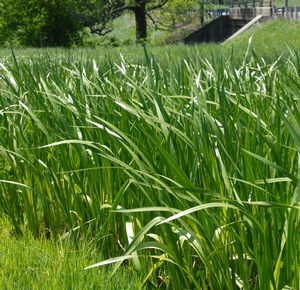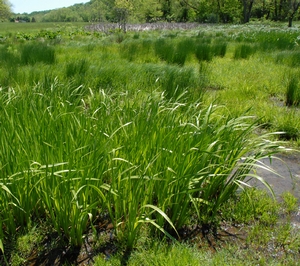Acorus americanus
Common: sweetflagAcorus americanus LP50 - 50 per flat
- Height: 2'-3'
- Spread: 2'-3'
- Spacing: 12"-18"
- Hardiness Zone(s): 3-6


Acorus americanus LP50 - 50 per flat

Acorus americanus is a hardy perennial swamp or bog plant with sweet, spicy-scented leaves. Spadix-like flowers appear in June and July, followed by dark berries. Found at water's edge from Nova Scotia to Virginia to Washington to Alaska. Great for stabilizing pond edges or filling a boggy area.
Grow sweetflag in moist to wet soils in full sun or bright shade. It is a vigorous spreader in wet soils and works well for retaining soil at the edge of a stream or pond. Tolerates periods of dry, but its appearance may suffer in long droughts.
Acorus americanus is a wetland perennial with broad blade-like foliage resembling that of Iris versicolor or Typha angustifolia. It can be identified easily by breaking the foliage, which is uniquely aromatic. Acorus americanus can be distinguished from the European Acorus calamus by the several indistinct ribs in its foliage. By contrast, Acorus calamus has a single distinct mid rib.
Acorus americanus is typically found in the shallow waters and shorelines of wetlands across northern North America, as far south as Virginia.
In our trials, Acorus americanus has proved itself as an excellent erosion control species for the edges of our bioretention basin and ponds. It forms colonies by spreading rhizomatously, providing effective soil stabilization and dense cover for wildlife. It also thrives in the wet zone of our bioswales, where it experiences occasional inundation. Its aromatic foliage makes it an ideal plant for sites with deer pressure.
According to the USDA, DNA evidence now supports the theory that Acorus is the oldest surviving genus in the monocots.